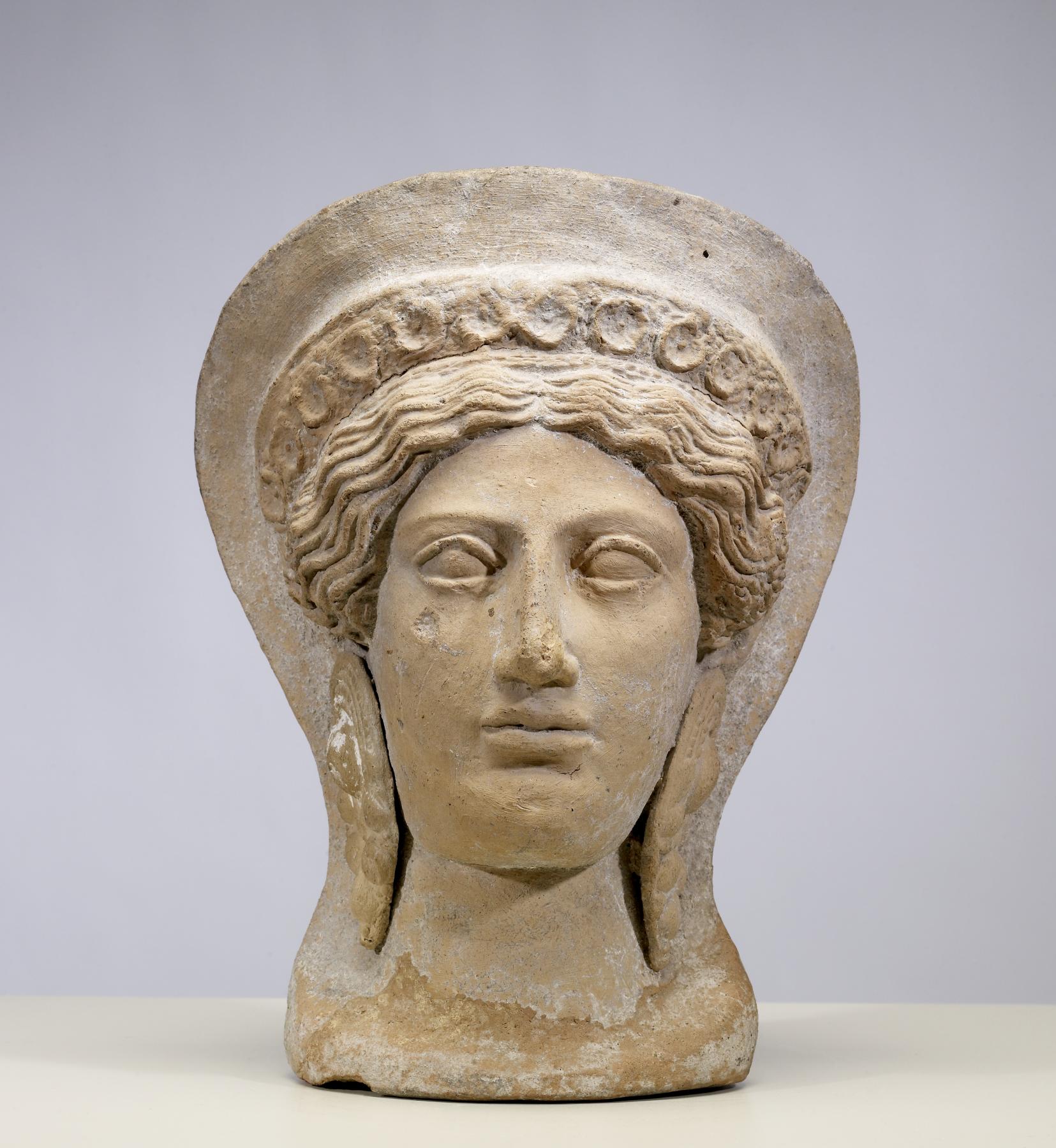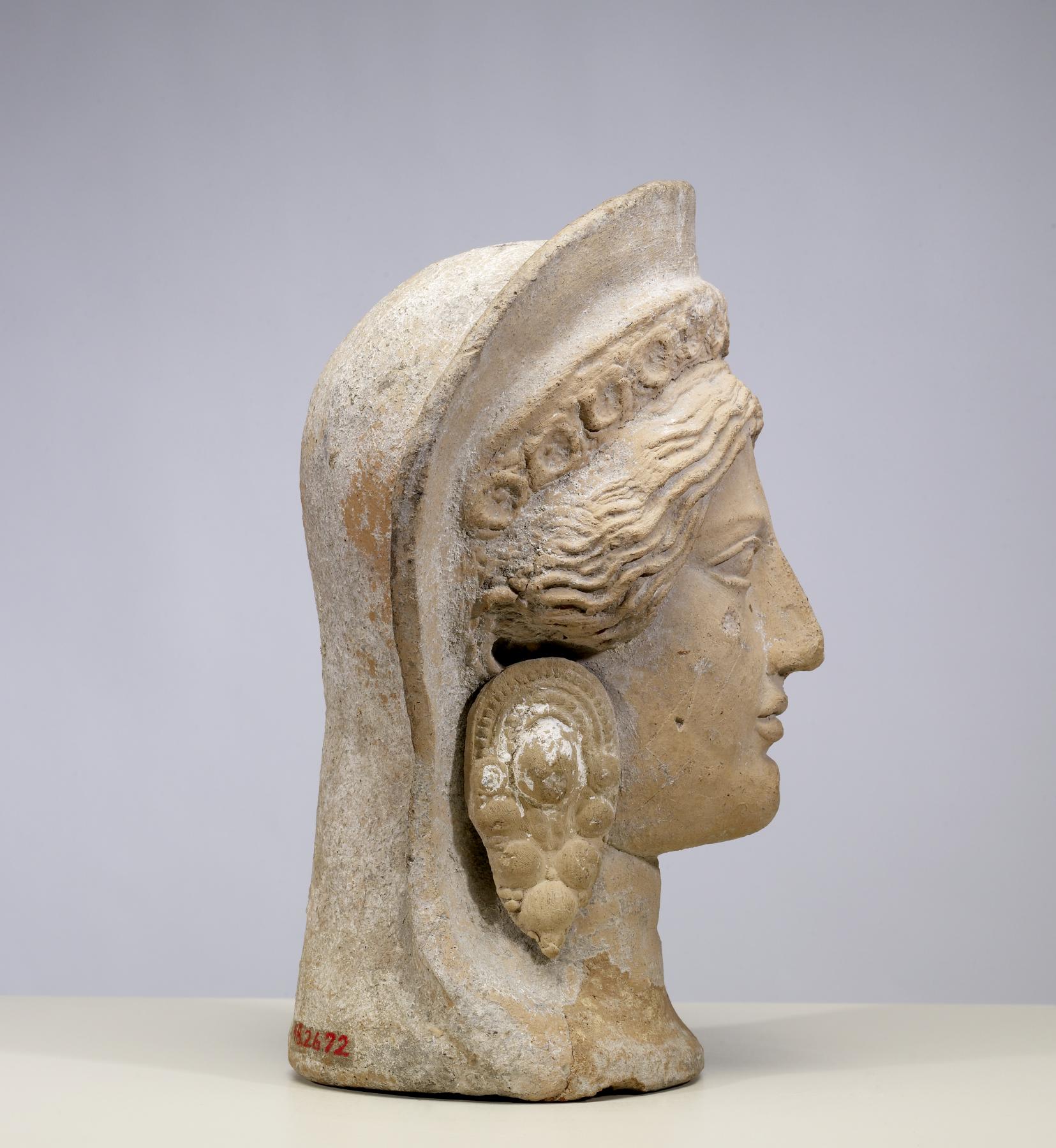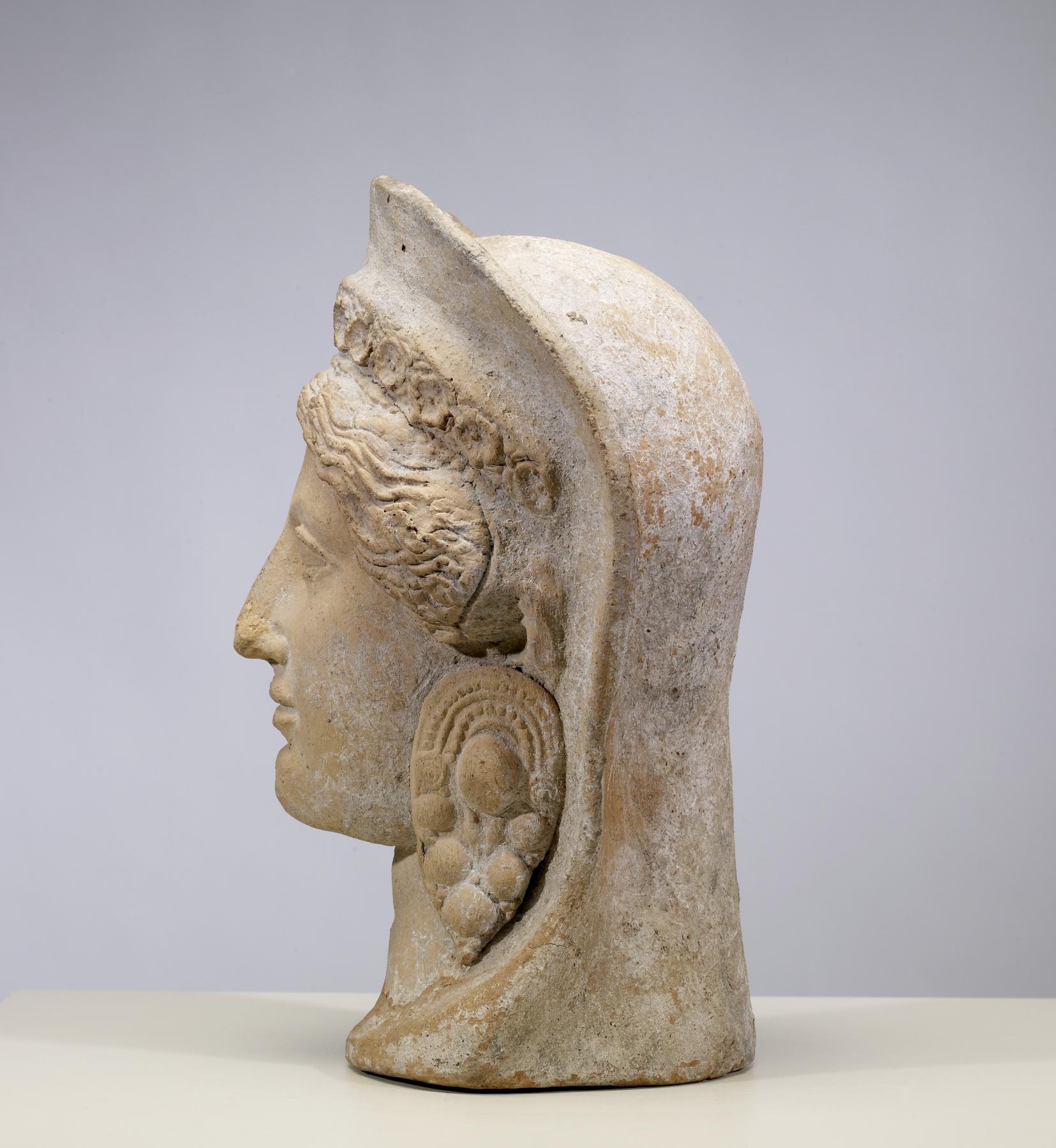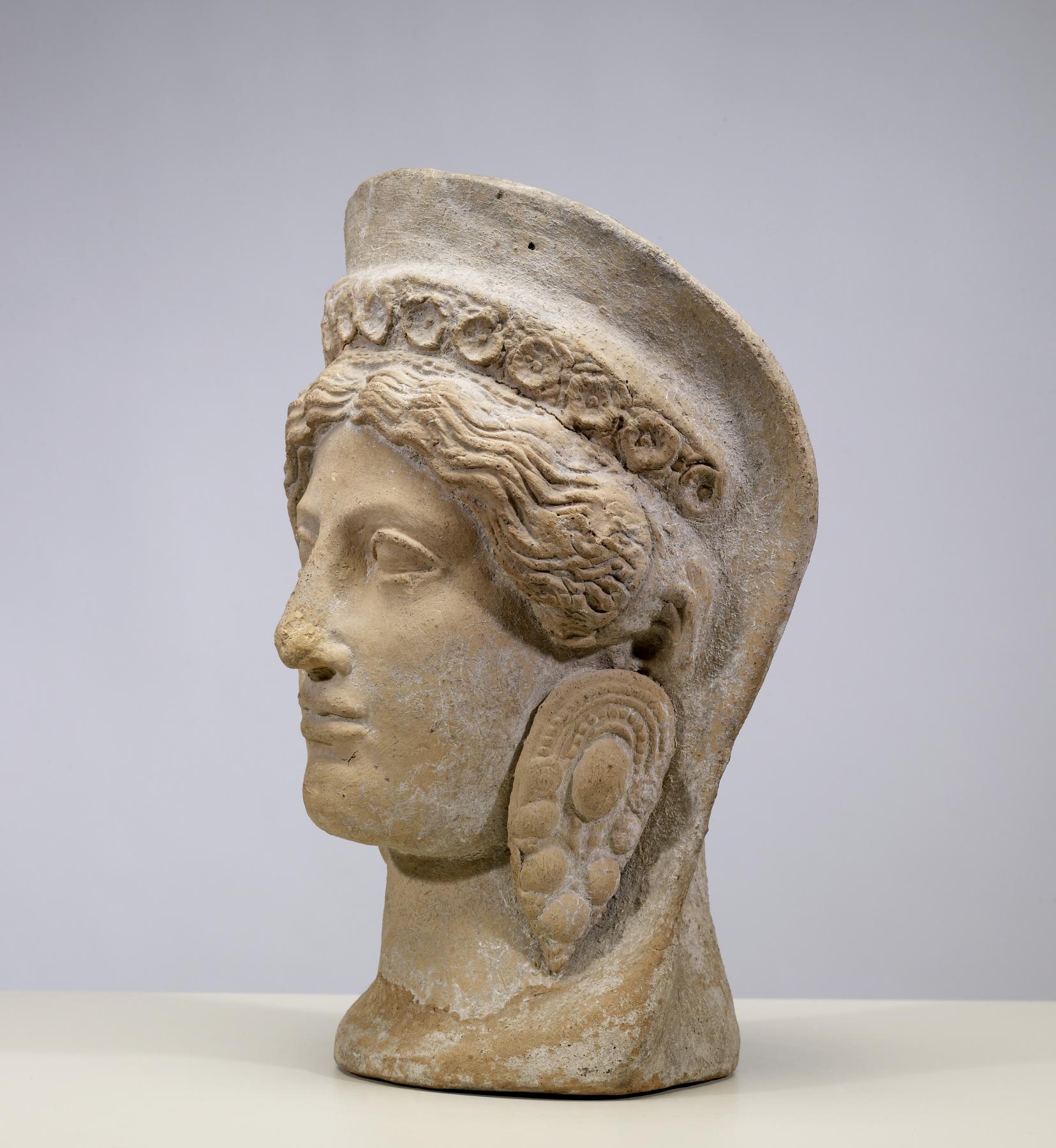Head of a Woman with Earrings
(Roman Empire )
The woman depicted in this votive dedication is draped in a thick cloak and wears a diadem embellished with a row of rosettes. Her wavy hair is centrally parted and tucked neatly behind hear ears. Her eyes are a regular almond shape and her nose is long and narrow. Her features can be considered idealized as they give no indication of individuality. The only details that display a sense of individuality are the elaborate earrings she wear that were likely made separately, perhaps cast from real examples in gold. The earrings are composed of a central sphere crowned by semicircular double row of dots. From the stud hang several other spheres arranged in the shape of an inverted pyramid.
Votive offerings in the form of heads are typical dedications from the Etruscan sanctuaries of central Italy and became widespread from the 4th to 3rd centuries BCE. Most votive heads are made using two molds—one for the face and one for the back of the head. The two clay halves were joined and the features were reworked with a modeling tool to create more individuality. The heads are meant to be viewed frontally, with little attention to detail paid to the back of the sculpture. Often times these heads were represented with a simple veil draped over the back of the head. The style of most Etruscan votive heads clearly demonstrates the influence of Classical Greek sculpture (480-323 BCE), a period characterized by a heightened interest in representing the ideal human form.
Provenance
Provenance (from the French provenir, 'to come from/forth') is the chronology of the ownership, custody, or location of a historical object. Learn more about provenance at the Walters.
Mr. and Mrs. Fred Olsen, Connecticut, [date and mode of acquisition unknown]; Sotheby Parke Bernet, New York, 22 Nov 1974, lot 201; Peter Gravina, [date and mode of acquisition unknown]; Sotheby's New York, 12 Feb 1988, lot 103; Herbert and Marilyn Scher, Baltimore, 1988, by purchase; Walters Art Museum, 1992, by gift.
Exhibitions
| 2006-2009 | Bedazzled: 5,000 Years of Jewelry from the Walters Art Museum. Frist Center for the Visual Arts, Nashville; The John and Mable Ringling Museum of Art, Sarasota; The Walters Art Museum, Baltimore. |
Geographies
Italy (Place of Origin)
Measurements
H: 11 5/8 x W: 8 11/16 x D: 6 7/8 in. (29.5 x 22 x 17.5 cm)
Credit Line
Gift of Herbert and Marilyn Scher, 1992
Location in Museum
Not on view
Accession Number
In libraries, galleries, museums, and archives, an accession number is a unique identifier assigned to each object in the collection.
In libraries, galleries, museums, and archives, an accession number is a unique identifier assigned to each object in the collection.
48.2672












